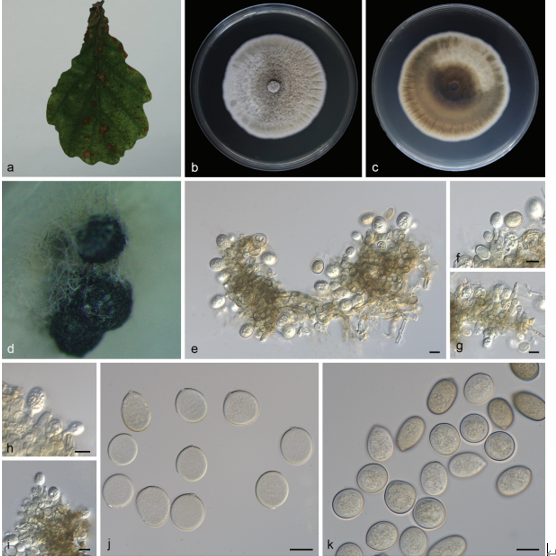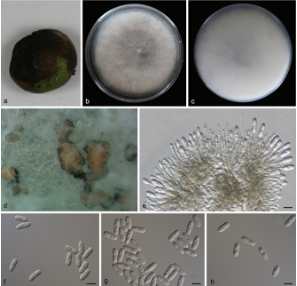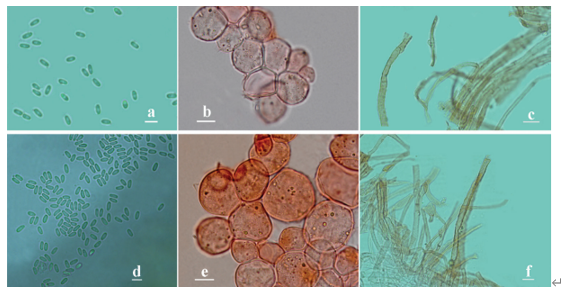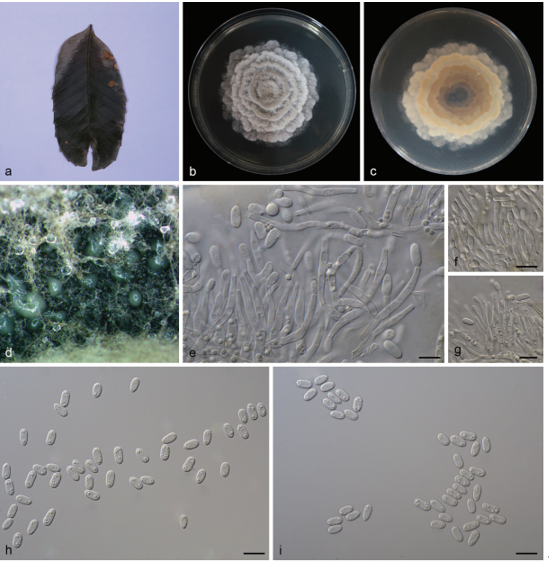Tomentella atrocastanea H.S. Yuan, X. Lu & Y.C. Dai 2020
Index Fungorum number: IF555628; Facesoffungi number: FoF 05603
Holotype: CHINA, Liaoning Province, Qingyuan County, Experimental Station of Forest Ecology, on rotten angiosperm wood debris, 31 July 2017, Yuan 12179 (IFP 019245, holotype), Yuan 12170 (IFP 019246).
Morphological description
Basidiocarps annual, resupinate, separable from the substrate, mucedinoid, without odour or taste when fresh, 0.2–0.6 mm thick, continuous. Hymenophoral surface smooth, dark chestnut (6F7) and concolorous with subiculum when dry. Sterile margin often determinate, farinaceous, concolorous with hymenophore. Rhizomorphs absent. Subicular hyphae monomitic; generative hyphae clamped and rarely simple septate, thick-walled, occasionally branched, 5–7 μm diam, without encrustation, pale brown in KOH, acyanophilous, inamyloid. Subhymenial hyphae clamped and rarely simple septate, thin-walled, occasionally branched, 7–9 μm diam; hyphal cells more or less uniform, pale brown in KOH, acyanophilous, inamyloid. Cystidia absent. Basidia 10–40 μm long and 5–10 μm diam at apex, 5–10 μm at base, with a clamp connection at base, utriform, not stalked, sinuous, rarely with transverse septa, pale brown in KOH and in distilled water, 4-sterigmate; sterigmata 4–6 μm long and 2–2.5 μm diam at base. Basidiospores thick-walled, (7–)7.5–8.5(–9) × (6–)6.5–8(–8.5) μm, L = 7.96 μm, W = 7.28 μm, Q = 1.07–1.13 (n = 60/2), globose to subglobose in frontal and lateral views, echinulate, pale brown in KOH and distilled water, cyanophilous, inamyloid; echinuli usually isolated, up to 3 μm long.
Habitat: On rotten angiosperm wood debris.
Distribution: In China.
GenBank Accession: ITS: MK211743, MK211742; LSU: MK446338, MK446337.
Notes: Tomentella tenuirhizomorpha X. Lu et al. is similar to T. atrocastanea by having mucedinoid and continuous basidiocarps separable from the substrate, a smooth hymenophoral surface, a farinaceous sterile margin, clamped and simple septate hyphae, more or less uniform subhymenial hyphal cells, the absence of cystidia, and globose to subglobose basidiospores. However, T. tenuirhizomorpha differs from T. atrocastanea by having thin-walled subicular hyphae, clavate basidia and slender rhizomorphs (Lu et al. 2018a). T. agereri Yorou also resembles T. atrocastanea by having continuous basidiocarps separable from the substrate, more or less uniform subhymenial hyphal cells, the absence of cystidia, and globose to subglobose basidiospores. But, it differs by fulvous or sienna, arachnoid basidiocarps with a byssoid sterile margin, clamped hyphae, clavate basidia and the presence of rhizomorphs (Yorou et al. 2011).
Reference: Hai‑Sheng Yuan1,2· Xu Lu1,2 · Yu‑Cheng Dai3 ·
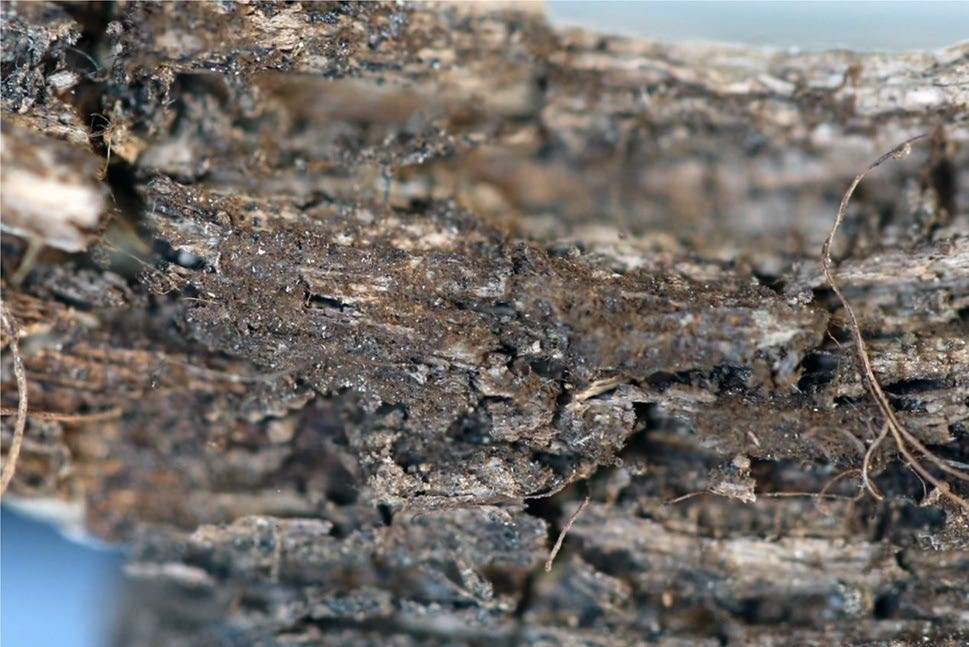
A basidiocarp of Tomentella atrocastanea (IFP 019245, holotype)


